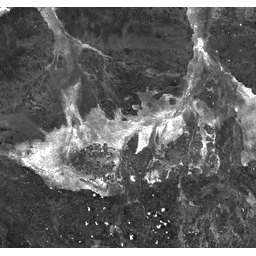Page Summary
-
This dataset of Landsat 4 TM composites is superseded by a newer version and is complete as of May 1, 2017.
-
The dataset spans from August 1982 to December 1993 and is provided by the USGS.
-
It includes the Burn Area Index (BAI), which emphasizes the charcoal signal in post-fire images using Red and Near-IR bands.
-
Composites are created from all scenes in each 8-day period, with the most recent pixel used for the value.
-
Landsat datasets are in the public domain and can be used without copyright restriction, with credit to the USGS recommended.

- Dataset Availability
- 1982-08-21T00:00:00Z–1993-12-11T00:00:00Z
- Dataset Provider
- USGS
- Tags
Description
These Landsat 4 TM composites are made from Level L1T orthorectified scenes, using the computed top-of-atmosphere (TOA) reflectance. See Chander et al. (2009) for details on the TOA computation.
As of May 1, 2017, the USGS is no longer producing Pre-Collection Landsat, and therefore this collection is complete. Please switch to a Collection 1-based dataset. See this documentation page for more information.
The Burn Area Index (BAI) is generated from the Red and Near-IR bands, and measures the spectral distance of each pixel from a reference spectral point (the measured reflectance of charcoal). This index is intended to emphasize the charcoal signal in post-fire images. See Chuvieco et al. (2002) for details.
These composites are created from all the scenes in each 8-day period beginning from the first day of the year and continuing to the 360th day of the year. The last composite of the year, beginning on day 361, will overlap the first composite of the following year by 3 days. All the images from each 8-day period are included in the composite, with the most recent pixel as the composite value.
Bands
Bands
| Name | Pixel Size | Description |
|---|---|---|
BAI |
30 meters | Burn Area Index |
Terms of Use
Terms of Use
Landsat datasets are federally created data and therefore reside in the public domain and may be used, transferred, or reproduced without copyright restriction.
Acknowledgement or credit of the USGS as data source should be provided by including a line of text citation such as the example shown below.
(Product, Image, Photograph, or Dataset Name) courtesy of the U.S. Geological Survey
Example: Landsat-7 image courtesy of the U.S. Geological Survey
See the USGS Visual Identity System Guidance for further details on proper citation and acknowledgement of USGS products.